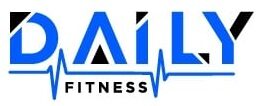Hearing aids have advanced dramatically in the ever-changing environment of assistive technology, providing new solutions for those with hearing loss that go beyond simple amplification. The incorporation of cutting-edge technologies has changed the face of hearing aid design and functioning. This essay digs into the newest technical developments affecting the field of hearing aids, with a particular emphasis on the well-known Phonak hearing aid.
Phonak’s Revolutionary Sound Processing
Phonak, a well-known company in the hearing aid market, continues to pioneer advances in sound processing technology. Their cutting-edge gadgets use complex algorithms that adapt to changing listening settings in real-time. This guarantees that users get the best sound quality possible, whether they’re in a quiet room or on a busy street.
Bluetooth Connectivity
Bluetooth technology integration has revolutionised hearing aid use. Phonak hearing aids, for example, offer wireless connectivity to smartphones, tablets, and other Bluetooth-enabled devices. This not only improves the listening experience but also enables hands-free phone conversations, music streaming, and direct audio input from a variety of sources.
AI and Machine Learning
The combination of hearing aids, artificial intelligence, and machine learning has brought in a new era of personalisation. Phonak devices with AI capabilities may learn from users’ preferences and adjust settings accordingly. This continual learning process guarantees that the hearing aid grows alongside the user, resulting in a personalised and dynamic listening experience.
Rechargeable Battery Technology
In current hearing aids, rechargeable batteries are progressively replacing traditional disposable batteries. Phonak has been at the forefront of this movement, delivering rechargeable solutions that are both convenient and environmentally sustainable. Users may get a full day’s worth of use out of a single charge, avoiding the need to change throwaway batteries regularly.
Directional Microphones for Noise Reduction
Phonak hearing aids use powerful directional microphones and noise-reduction algorithms to improve speech comprehension in loud conditions. Wearers may engage more actively in discussions and communicate more clearly by focusing on the most important sounds, even in difficult acoustic environments.
Telehealth and Remote Adjustments
The global transition to telehealth services has influenced the hearing aid market. Phonak’s use of telehealth technology enables wearers to obtain virtual consultations and adjustments, eliminating the need for regular in-person trips to the audiologist. This not only enhances accessibility but also guarantees that modifications are made in a timely manner for maximum performance.
Tinnitus Management Features
Phonak hearing aids provide integrated tinnitus control capabilities for people who suffer from both hearing loss and tinnitus. These features include calming noises and customisable settings to assist in hiding or lessen the symptoms of tinnitus, giving consumers a more comprehensive solution to their auditory issues.
Connectivity to Smart Home Devices
Phonak understands the value of connection beyond smartphones. Their most recent gadgets are meant to work smoothly with smart home devices, allowing users to operate their hearing aids via voice commands or smart home hubs. This degree of connection improves the entire user experience and is appropriate for consumers’ increasingly linked digital lifestyles.
Conclusion
Phonak’s dedication to pushing the frontiers of hearing aid technology mirrors the industry’s overall trend towards more functionality and user-centric design. The most recent technology advancements, from AI integration to Bluetooth connectivity, not only increase the efficacy of hearing aids but also help to create a more inclusive and connected environment for those with hearing loss. As these advancements progress, the future of hearing aids seems to be bright, with users experiencing new levels of personalisation, convenience, and better quality of life.

